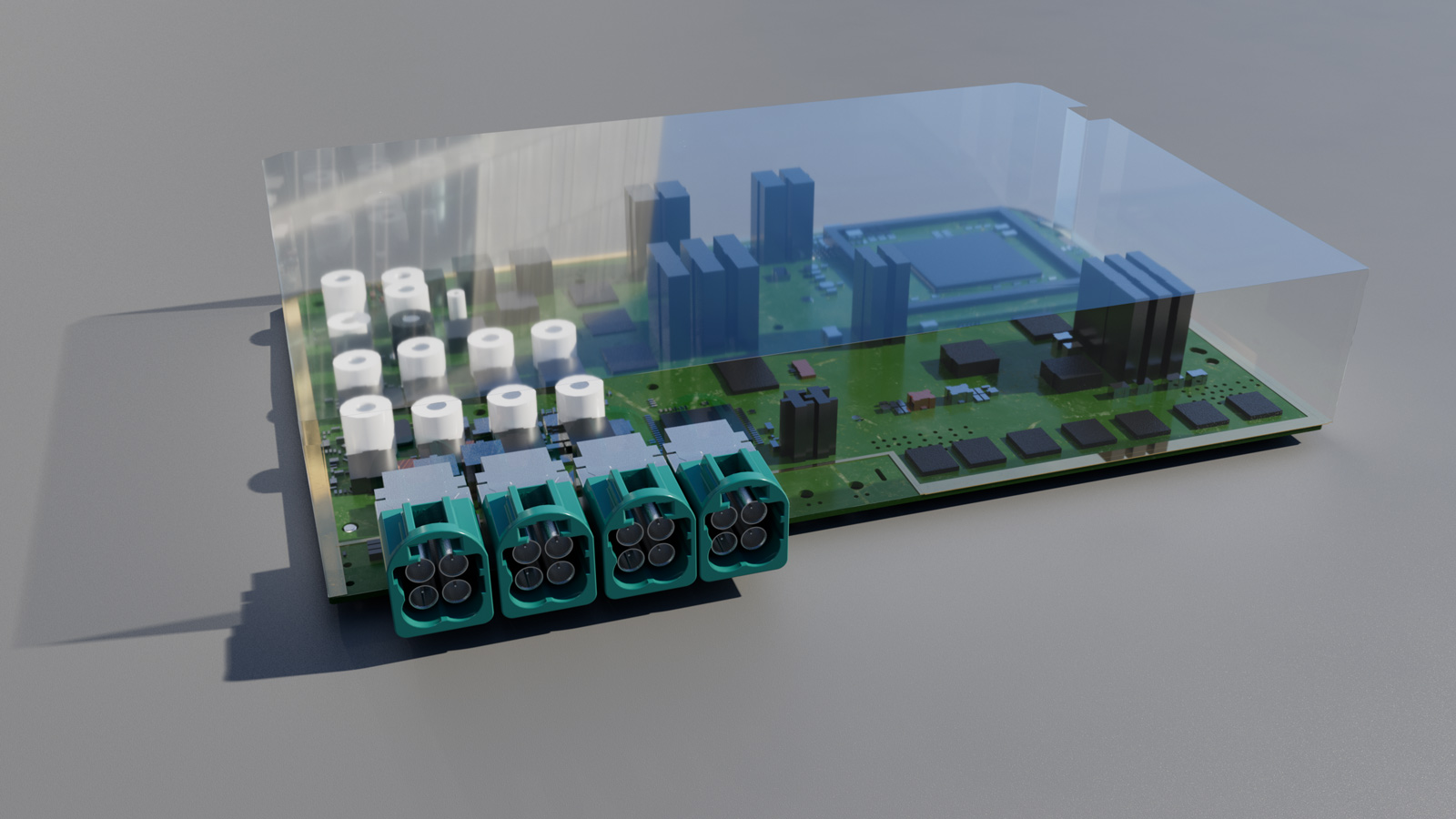What Is Mini-Coax Automotive?
Mini-coax automotive, also known as MCA, is a smaller, lighter and more flexible version of the traditional coaxial cable widely used in a variety of high-speed data transfer applications.
Traditional coax cable is made of an inner conductor surrounded by a conducting shield. Many coaxial cables also have a protective outer sheath. Its ruggedness and resistance to interference have made coax popular in automotive applications. The global connector standard known as FAKRA (an acronym for Fachkreis Automobil) has been used by automotive OEMs as the standard for full-size coax cable for more than 20 years.
However, as OEMs have continued to add data-intensive advanced driver-assistance systems to their vehicles, the bulky size of the FAKRA interface has become an impediment to innovation. Enter MCA.
Over the past few years, technology providers have been introducing MCA as a new generation of smaller connectors designed to address vehicle packaging issues while delivering the high frequencies and high bandwidth needed to carry signals from cameras, GPS and other onboard sensors that enable the software-defined vehicle.
Benefits of mini-coax automotive
The most obvious benefit of MCA is reduced size and weight. Each individual wire is thinner and lighter, reducing the space required by up to 80 percent compared with conventional coax connectors.

MCA offers up to 80 percent space savings compared with conventional coax connectors.
MCA enables quick and efficient data transfers from multiple sensors to the vehicle’s high-performance compute infrastructure and offers numerous other benefits, including:
- Higher frequency: While standard coax can support frequencies up to 6 GHz, MCA supports applications up to 20 GHz. This makes it particularly suitable as a high-speed connector for cameras and antennas in applications such as autonomous driving, cellular connectivity and other wireless communication systems used in modern vehicles. These faster speeds will be necessary to support next-generation capabilities like vehicle-to-vehicle wireless connectivity.
- Modularity: MCA offers greater modularity compared with traditional coaxial connectors, allowing OEMs to customize I/O based on application requirements. Allowing multiple ports into smaller modules also enables automation of the complete wiring assembly.
- Support for full automation: The MCA product family supports full automation of all subcomponents and cable assemblies using stamped and formed metal components with strip packaging for better quality control and cost optimization.
Aptiv supports the mini-coax automotive standard
Aptiv is at the forefront of high-speed connector innovations to help OEMs meet the requirements of the feature-rich vehicles of today and tomorrow, and we support both coax interfaces defined by the FAKRA standard. As one of the only suppliers of both connection systems and wiring harnesses, we have a unique perspective on how best to tackle challenges related to miniaturization and assembly automation while optimizing performance and cost.